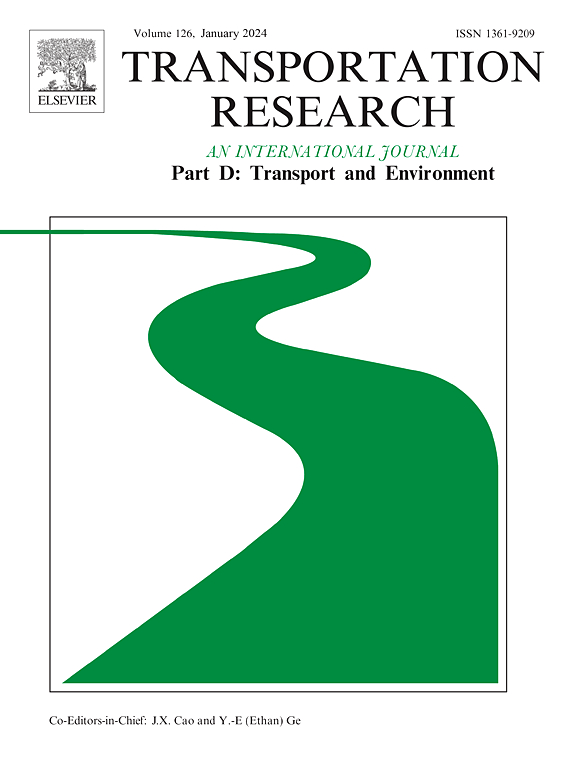第六章够了吗?公交网络重新设计公平性分析综述
IF 7.7
1区 工程技术
Q1 ENVIRONMENTAL STUDIES
Transportation Research Part D-transport and Environment
Pub Date : 2025-07-19
DOI:10.1016/j.trd.2025.104905
引用次数: 0
摘要
自2010年代中期以来,越来越多的公交机构进行了公交网络重新设计(bnr),以更好地满足乘客的需求。bnr会产生重大的公平影响,但评估这些影响的现有方法往往在各种方面存在不足。本研究回顾了40个机构的45个bnr,并为分析其公平影响制定了一个规范的四级分析框架。我们认为,BNR公平性分析应明确定义目标人群、评估的影响以及用于公平性决定的规则。目前的公平分析通常依赖于人口普查数据和基于邻近的指标,而忽略了老年人、残疾人和护理人员的生活经历和面临的障碍。我们建议整合基于乘客的资源,如车载调查,并整合社区反馈,以了解谁从服务变化中受益,谁受到服务变化的影响。我们提倡将系统范围和路线级别的评估结合起来,以揭示更细粒度的公平影响,并支持响应式设计变更。本文章由计算机程序翻译,如有差异,请以英文原文为准。
Is Title VI enough? A review of bus network redesign equity analyses
Since the mid-2010s, an increasing number of transit agencies have undertaken bus network redesigns (BNRs) to better align service with rider needs. BNRs entail major equity impacts but existing approaches to assessing those impacts often fall short in various ways. This study reviews 45 BNRs across 40 agencies and produces a normative four-level analytical framework for analyzing their equity impacts. We argue that BNR equity analyses should clearly define target populations, impacts assessed, and the rules used to make equity determinations. Current equity analyses often rely on census data and proximity-based metrics, which overlook the lived experiences and barriers faced by older adults, people with disabilities, and caregivers. We recommend incorporating rider-based sources, such as on-board surveys, and integrating community feedback to capture who benefits from or is burdened by service changes. We advocate for combining systemwide and route-level evaluations to reveal more granular equity impacts and support responsive design changes.
求助全文
通过发布文献求助,成功后即可免费获取论文全文。
去求助
来源期刊
CiteScore
14.40
自引率
9.20%
发文量
314
审稿时长
39 days
期刊介绍:
Transportation Research Part D: Transport and Environment focuses on original research exploring the environmental impacts of transportation, policy responses to these impacts, and their implications for transportation system design, planning, and management. The journal comprehensively covers the interaction between transportation and the environment, ranging from local effects on specific geographical areas to global implications such as natural resource depletion and atmospheric pollution.
We welcome research papers across all transportation modes, including maritime, air, and land transportation, assessing their environmental impacts broadly. Papers addressing both mobile aspects and transportation infrastructure are considered. The journal prioritizes empirical findings and policy responses of regulatory, planning, technical, or fiscal nature. Articles are policy-driven, accessible, and applicable to readers from diverse disciplines, emphasizing relevance and practicality. We encourage interdisciplinary submissions and welcome contributions from economically developing and advanced countries alike, reflecting our international orientation.

 求助内容:
求助内容: 应助结果提醒方式:
应助结果提醒方式:


